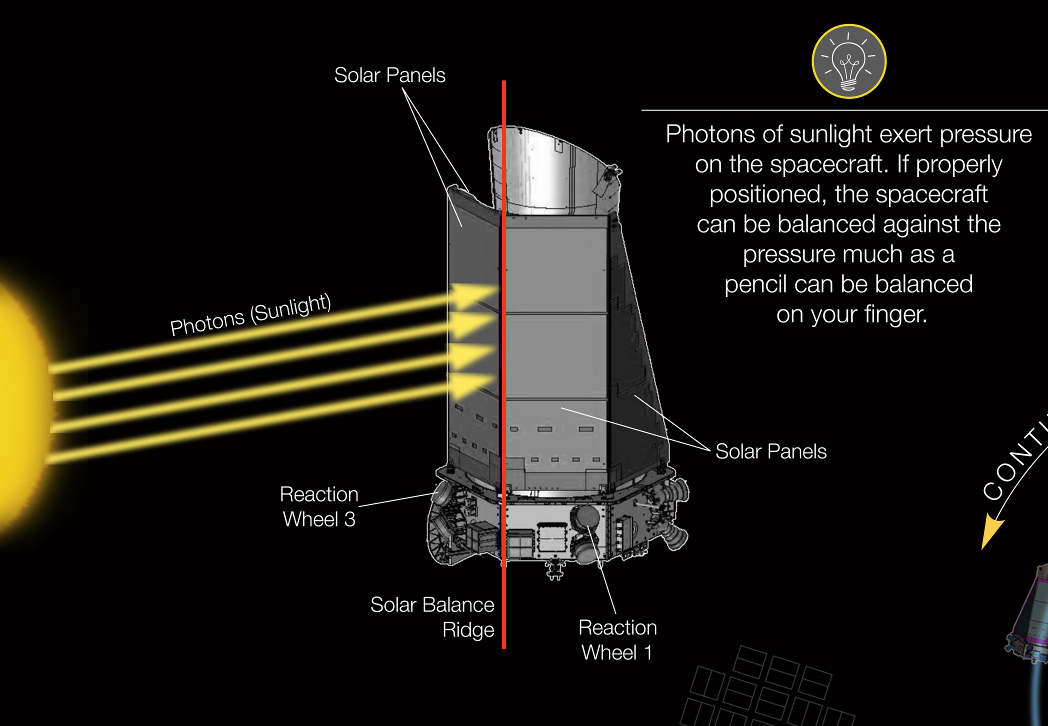
Image courtesy of NASA Ames/W Stenzel
 Copyright © Michael Richmond.
This work is licensed under a Creative Commons License.
Copyright © Michael Richmond.
This work is licensed under a Creative Commons License.
Kepler's attitude is held steady by four (4) reaction wheels. The craft needs 3 wheels to hold its attitude properly. Unfortunately, some of those wheels have failed:
May 13, 2009: Kepler begins its original mission July 14, 2012: Reaction wheel #1 fails May 11, 2013: Reaction wheel #2 fails -- original mission ends
So, the original mission of Kepler lasted about 4 years.
In November, 2013, NASA announced the "Second Light" mission, also known as "K2". This is a completely new way of using the spacecraft: instead of staring at one region of the sky for years at a time, Kepler will shift its attention to different regions every 83 days.
The basic idea is to use the pressure of sunlight as a replacement for one of the reaction wheels.

Image courtesy of
NASA Ames/W Stenzel
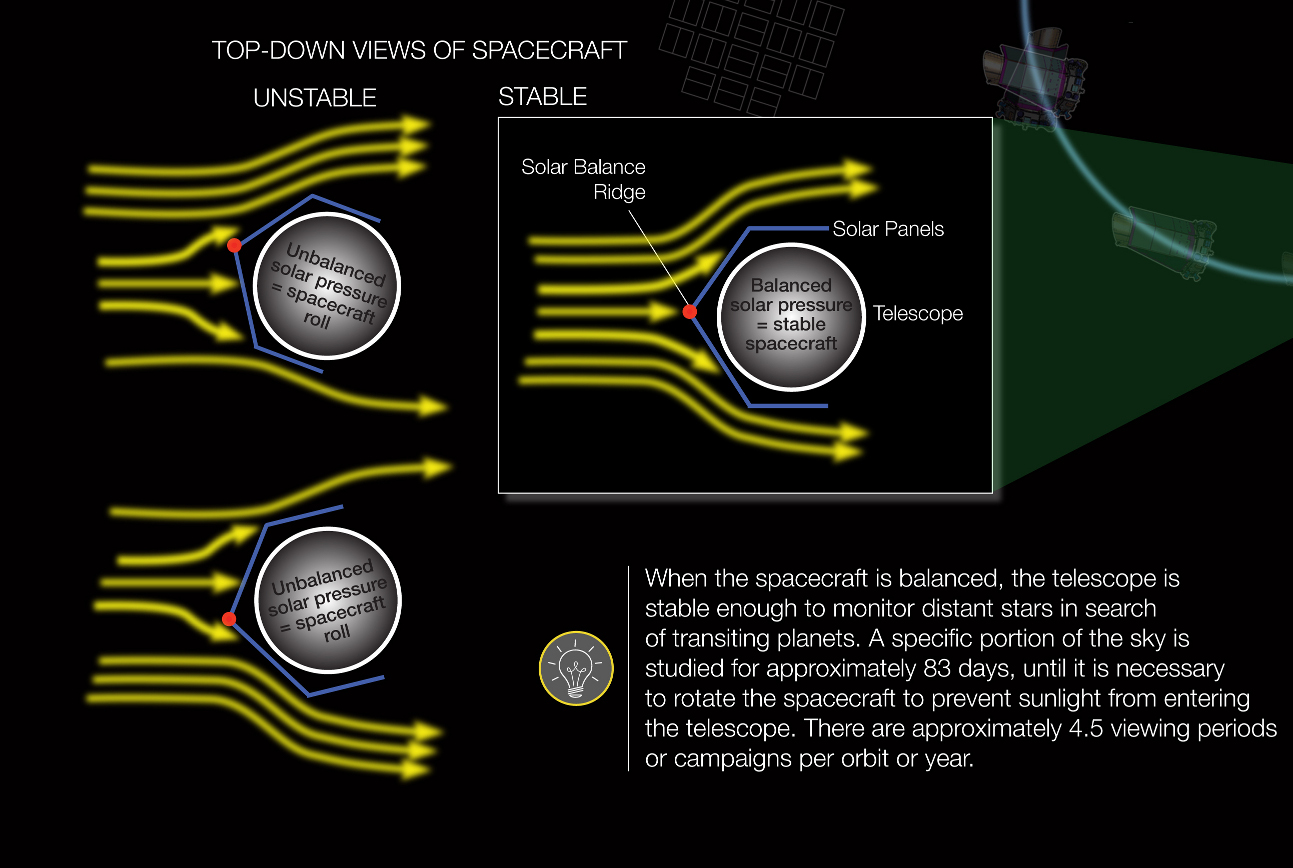
Image courtesy of
NASA Ames/W Stenzel
However, as the spacecraft orbits the Sun, the sunlight will strike it from a different direction. In order to keep the solar panels and sunshade oriented properly, Kepler will have to "roll" itself roughly four times each orbit.
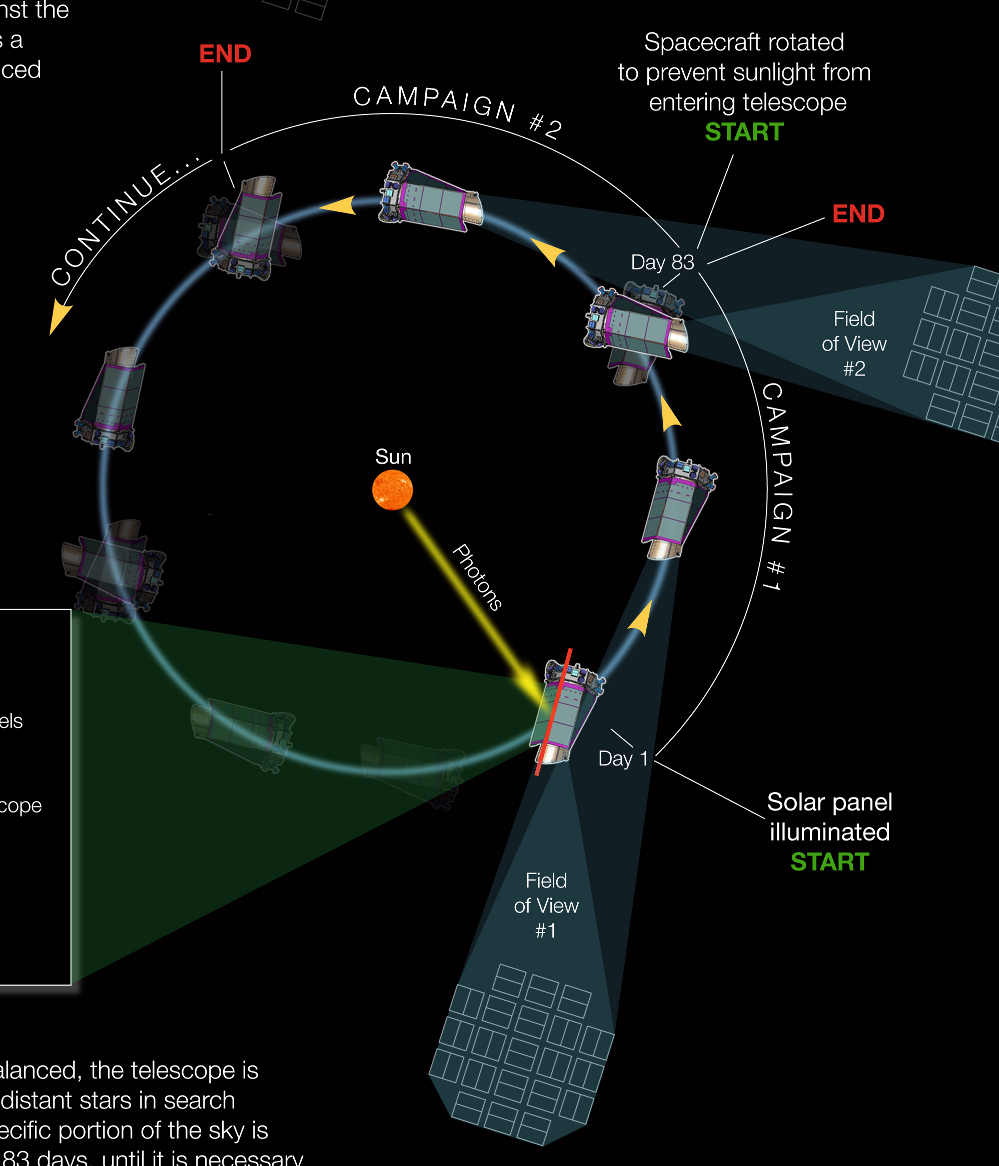
Image courtesy of
NASA Ames/W Stenzel
This means that Kepler's extended mission is broken into 83-day chunks:
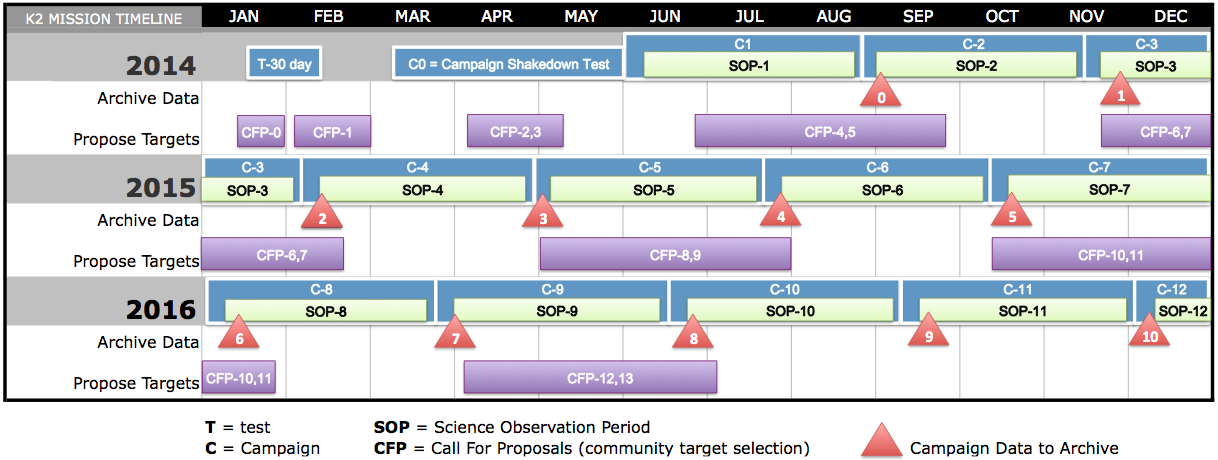
Image courtesy of
WikiWand
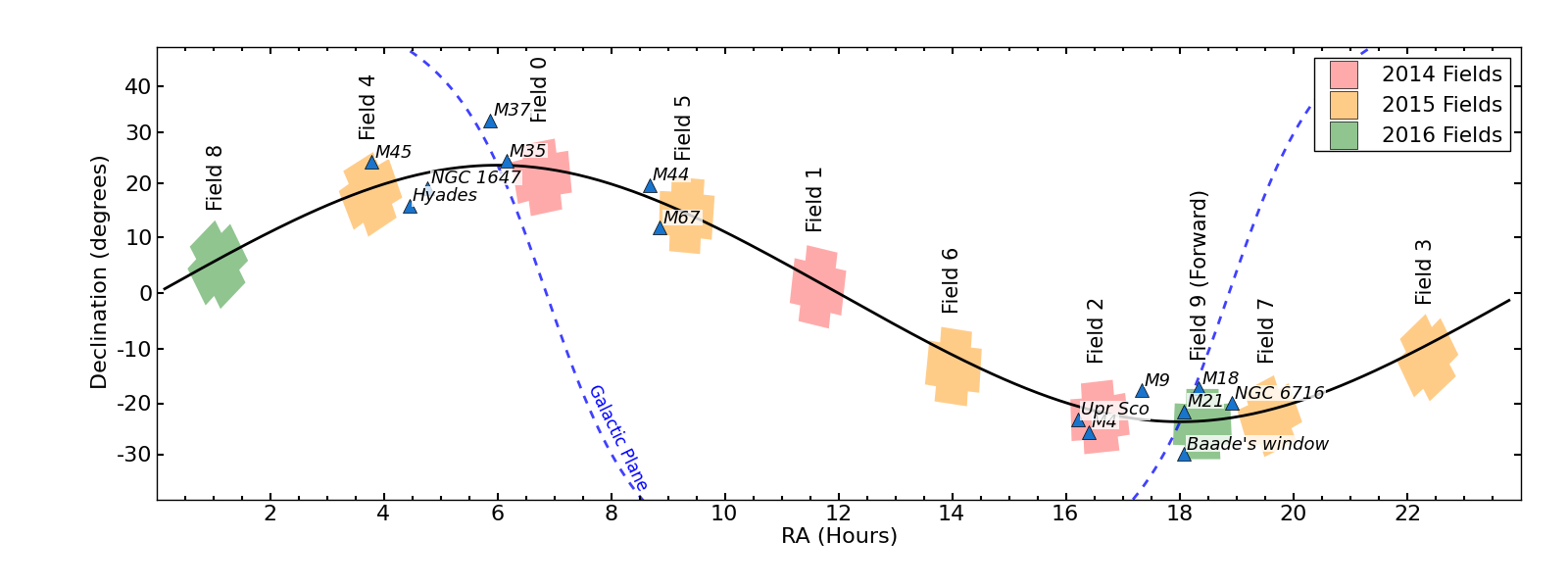
Image courtesy of
NASA Kepler mission
You can find a list of these fields at
Q: How will these changes to Kepler _operations_ affect
the types of planets it may find?
Does the loss of reaction wheels cause any loss of precision in the data? Alas, yes. Because the spacecraft cannot be held as steady, stars will move across the focal plane -- in patterns both "fast" (over hours) and "slow" (over days). You can read some of the details at the K2 Spacecraft Operation page.
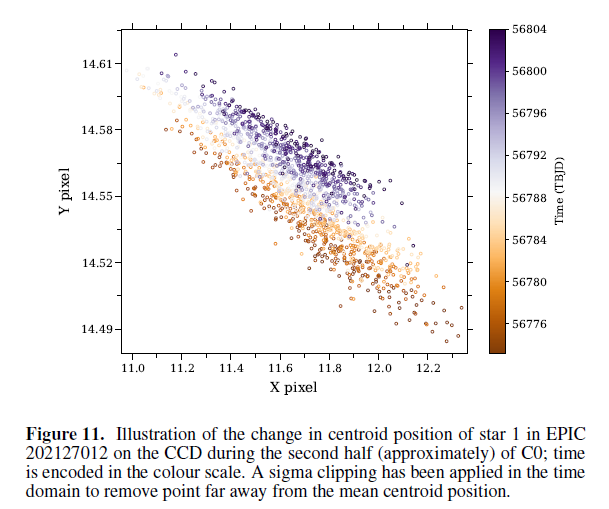
Fig 11 from
K2P2 - A photometry pipeline for the K2 mission
These motions in the focal planet cause big variations in the apparent brightness of stars, of course.
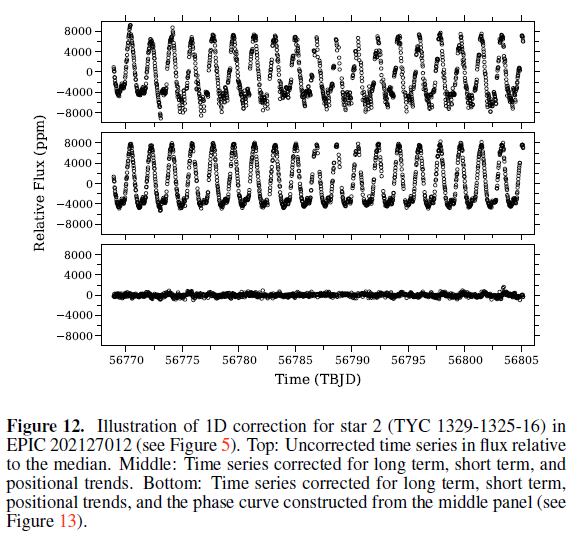
Fig 12 from
K2P2 - A photometry pipeline for the K2 mission
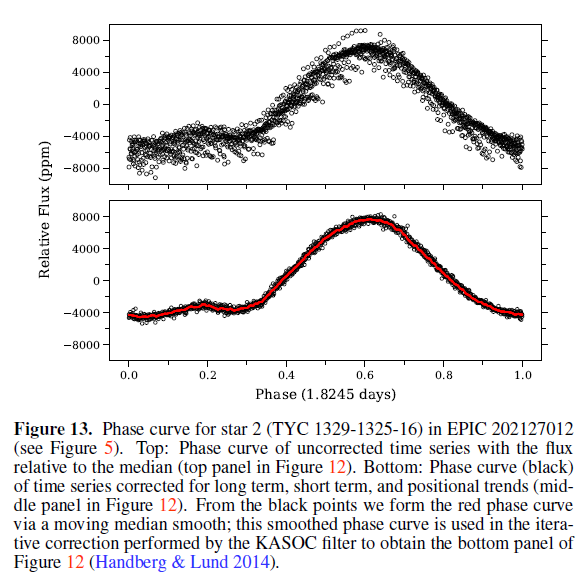
Fig 13 from
K2P2 - A photometry pipeline for the K2 mission
The result of all this drifting is an increase in the noise of each measurement. The bottom line is that the precision of bright stars will degrade from roughly 20 ppm to maybe 90 ppm when averaged over 6-hour periods.
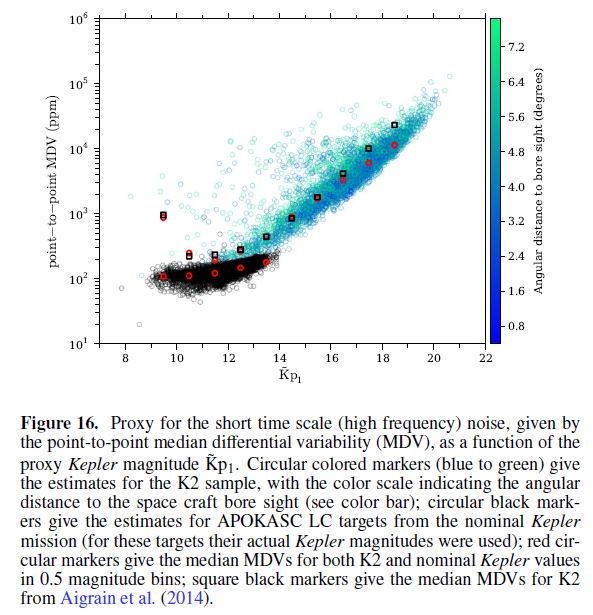
Fig 16 from
K2P2 - A photometry pipeline for the K2 mission
Kepler can still find planets -- but not quite as well as it could in the past. Some sample K2 light curves from a recent arXiv preprint by Montet et al. provide a hint of what we can expect from K2.
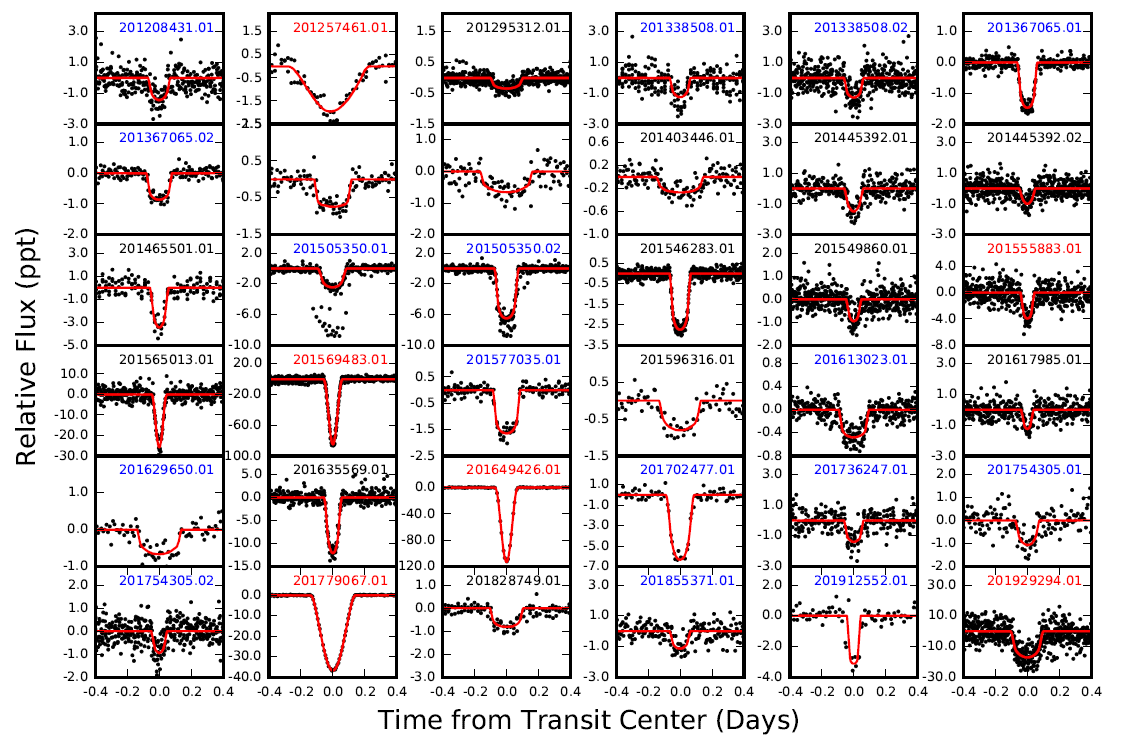
Image taken from
a recent arXiv preprint by Montet et al.
Q: How will these changes to Kepler _precision_ affect
the types of planets it may find?
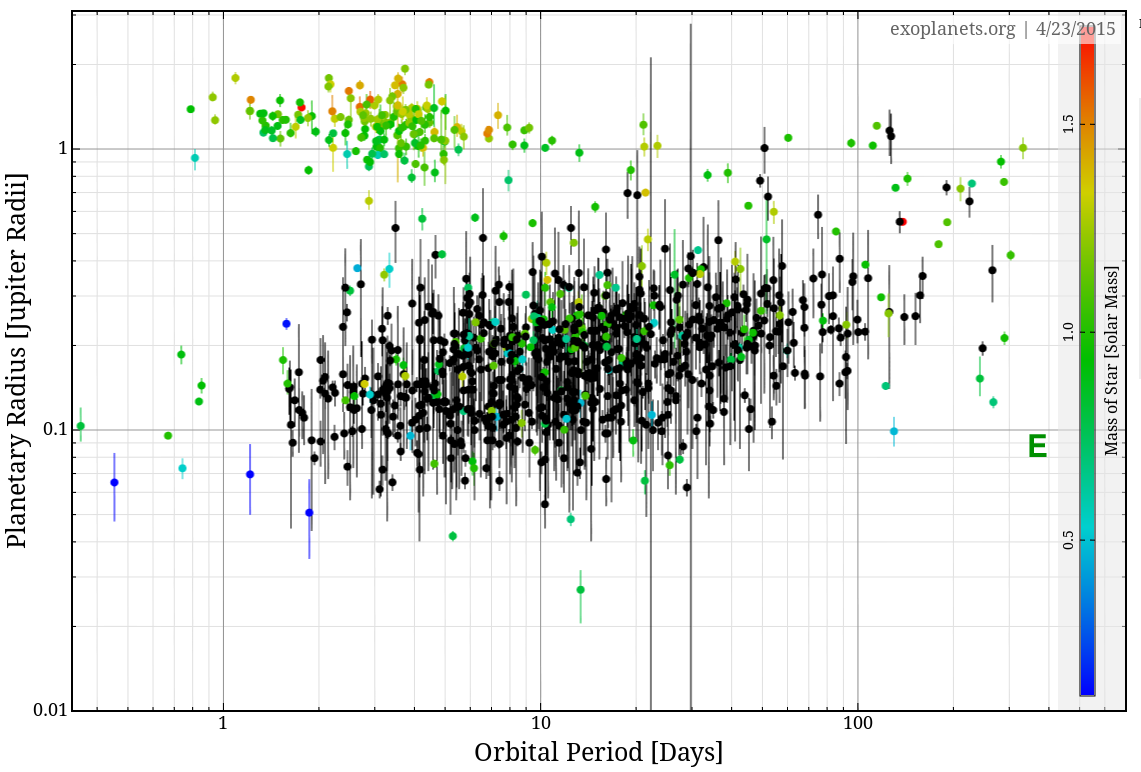
Transiting Exoplanet Survey Satellite
TESS launched YESTERDAY!
It is designed specifically to look for transiting planets .... but in quite a different manner than Kepler did. Some of the main differences are:
Let's look at the mission in some detail.
Like Kepler, TESS collects light over a wide optical range in order to gather as many photons as possible. TESS's overall passband is considerably more red.
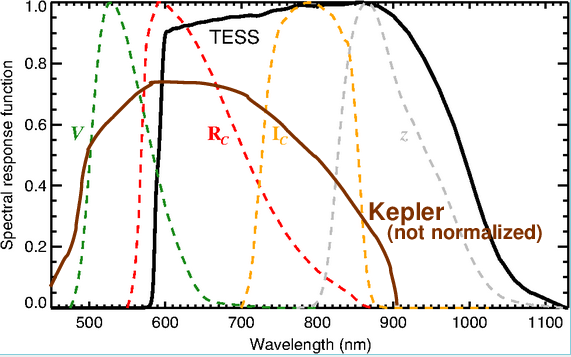
There are four cameras, each with an aperture of 10.5 cm.
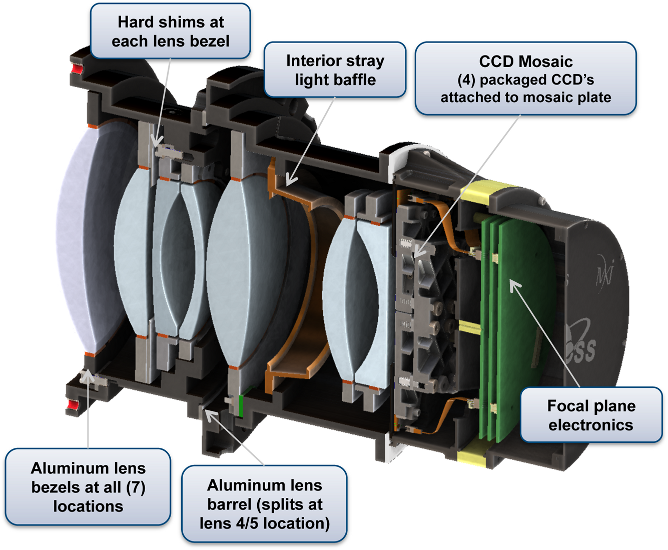
The cameras each focus light onto a mosaic of four 2048x2048 CCDs (each chip has a separate 2048x2048 frame-storage area), with 15-micron pixels. The result is a field of view of 24-by-24 degrees -- wow! The pixels are pretty big, though: about 40 arcseconds on a side.
The cameras acquire images with very short exposure times, just 2 seconds each.
Q: Why are the exposure times so short?
The images are co-added in sets of 60 to form 2-minute "summed images". On-board computers extract pixels from pre-selected subregions of each summed image for further processing. These summed images are co-added in sets of 15 to create "Full-Frame Images" (FFI) with effective exposure times of 30 minutes; these FFI are saved in full and transmitted to Earth.
The four cameras are arranged so that they cover a region of the sky 24-by-96 degrees on a side.
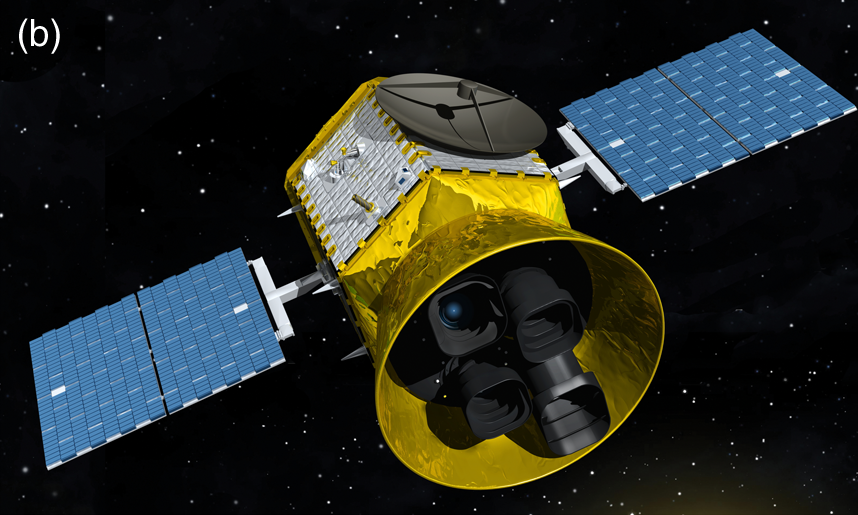
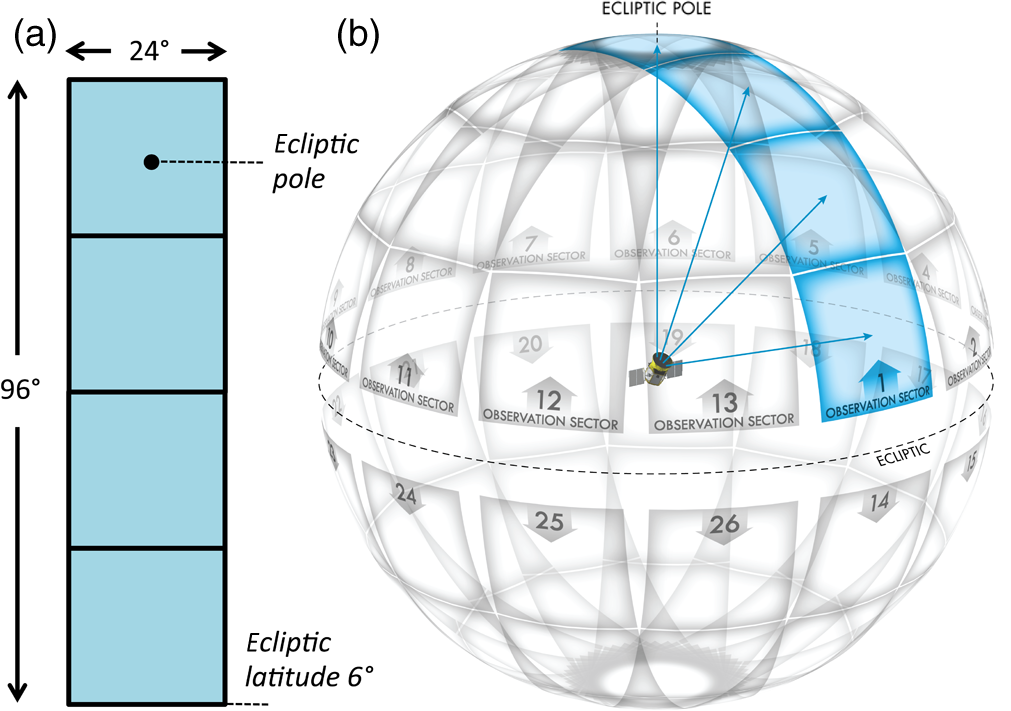
After 26 days, the spacecraft rolls to a new observation sector (which also keeps its solar panels and sunshade oriented properly). Over the course of the first year, TESS will have observed almost the entire northern ecliptic hemisphere, with a region near the ecliptic pole receiving continuous coverage. In Year 2, the spacecraft will repeat the process for the southern ecliptic hemisphere.
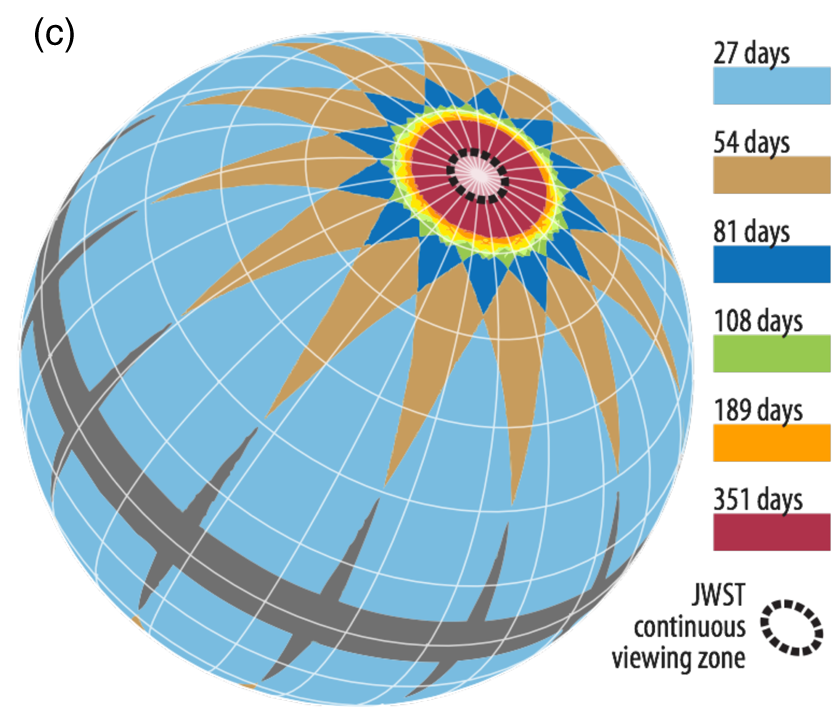
In each hemisphere,
Every 13.7 days, the spacecraft will pass close to the Earth in its orbit. At that time, it will transmit its data collected during the past two weeks.
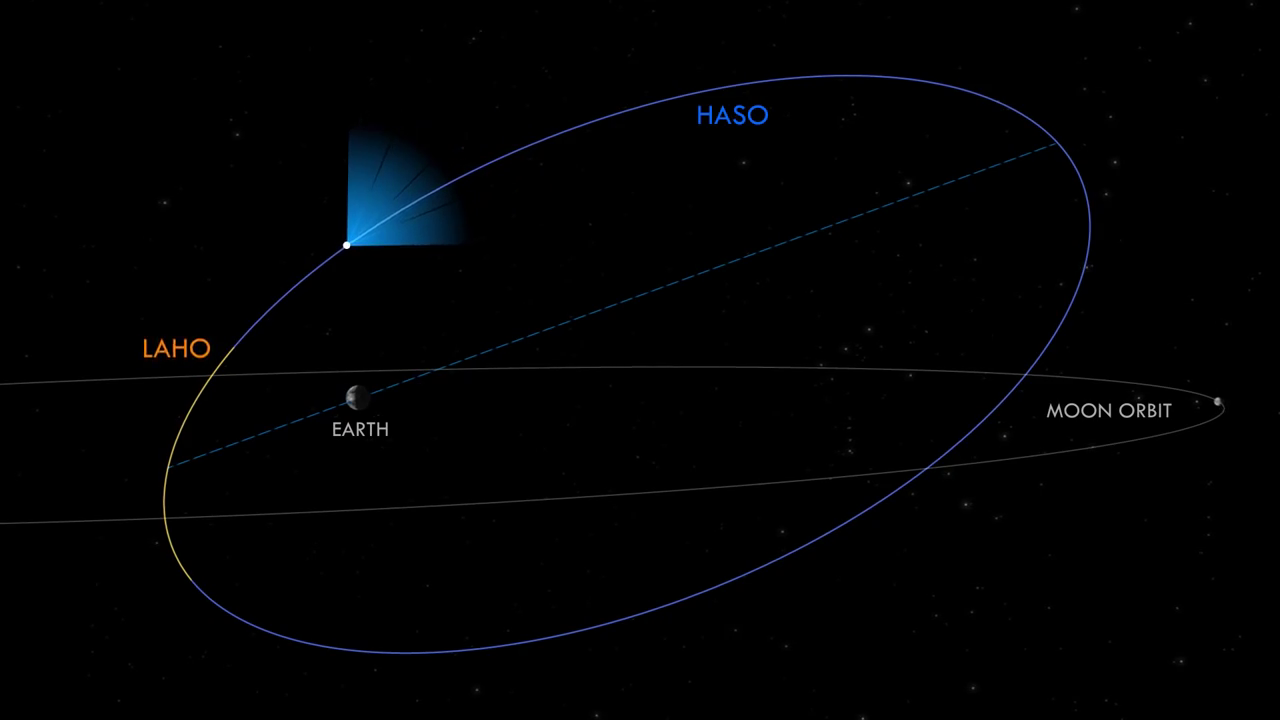
How precise will the measurements of stars be? The predictions suggest a best result which is similar to that of Kepler in its K2 mission: at best 80-100 ppm.

Now, remember: TESS will only measure the brightness of pre-selected stars. How many? The plan is to monitor roughly 200,000 stars over the entire sky; that means roughly 2,000 stars per 24-by-24-degree image, or around 3-4 stars per square degree. These stars will be selected from a pre-launch catalog, focusing on main-sequence FGKM stars.
The TESS team predicts that the mission ought to discover a large number of transiting planets, mostly in the "Super-Earth" size range:
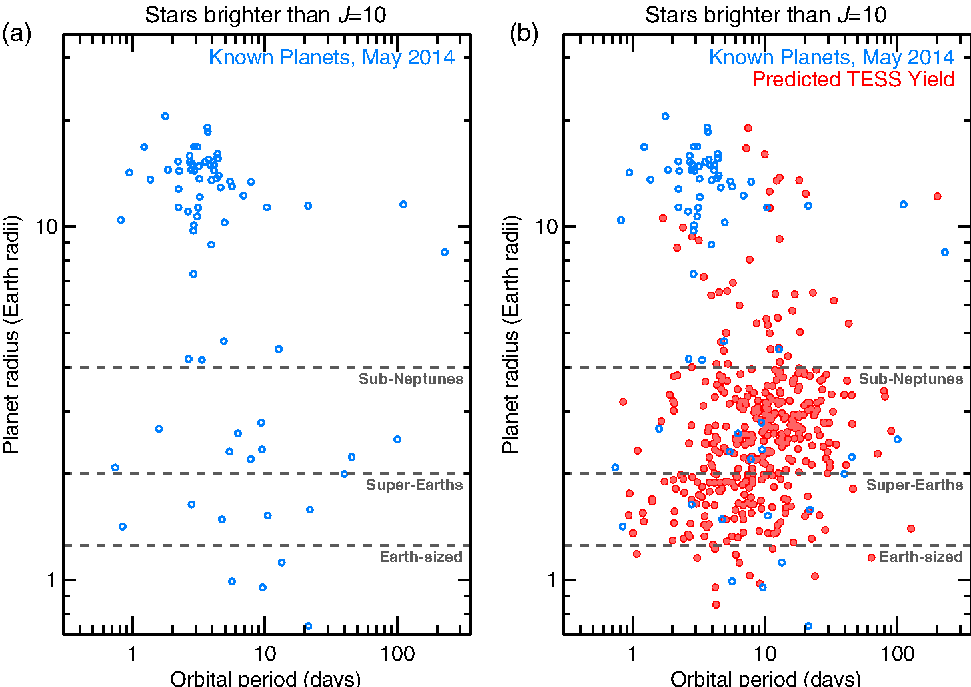
Over the past year, Kepler has found quite a few planets of this sort ...
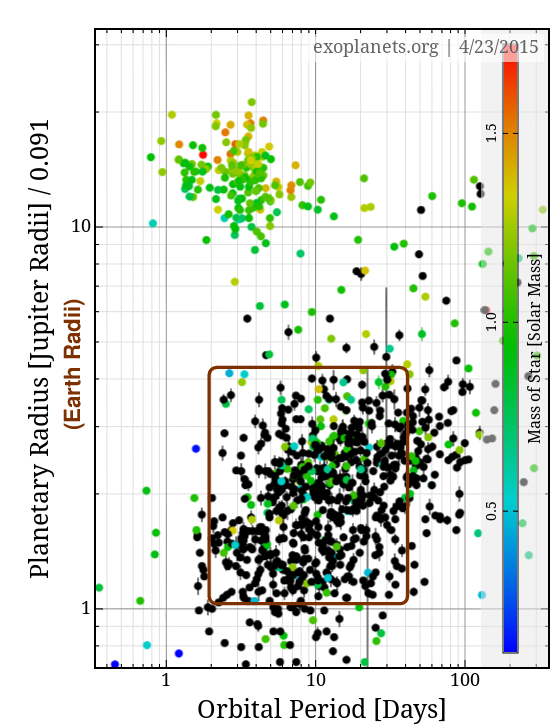
The information TESS gathers can be used for many purposes other than planet searches, of course. Among them are
TESS can be expected to detect p-mode oscillations on about 6000 stars brighter than V=7.5, including
(a) the majority of all stars brighter than V=4.5,
(b) about 75 stars smaller than the Sun,
(c) about 2000 upper-main-sequence and subgiant stars, and
(d) virtually all the giant stars.
Each 30 min FFI will provide precise (approx 5 mmag) photometry for approximately 106 bright galaxies and stars (Ic < 14-15) within a 2300-sq.deg. field.
I will be very happy to look at the variations of AGN and a host of variable stars in each field. If we're lucky, some nearby SNe will explode in them, too.
Astrometric exoplanet detection with Gaia
Gaia is a rather unusual "telescope," since it has been specially designed for astrometric observations. It resembles the Hipparcos satellite in many ways. The basic structure is two triple-mirror telescopes which point at regions in the sky separated by an angle of about 106.5 degrees.
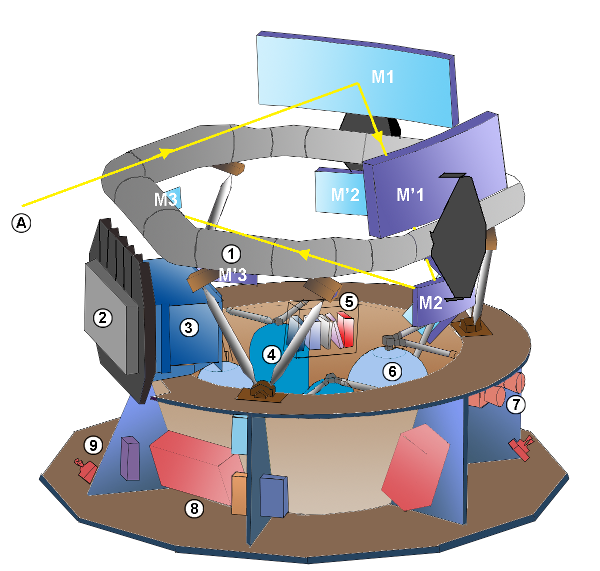
Image courtesy of
Wikipedia
Light from the two telescopes is combined so that it falls upon the focal plane simultaneously. The telescope rotates with a period of six hours, causing stars to sweep across this focal plane in about 60 seconds. Objects in both directions are detected and measured together.
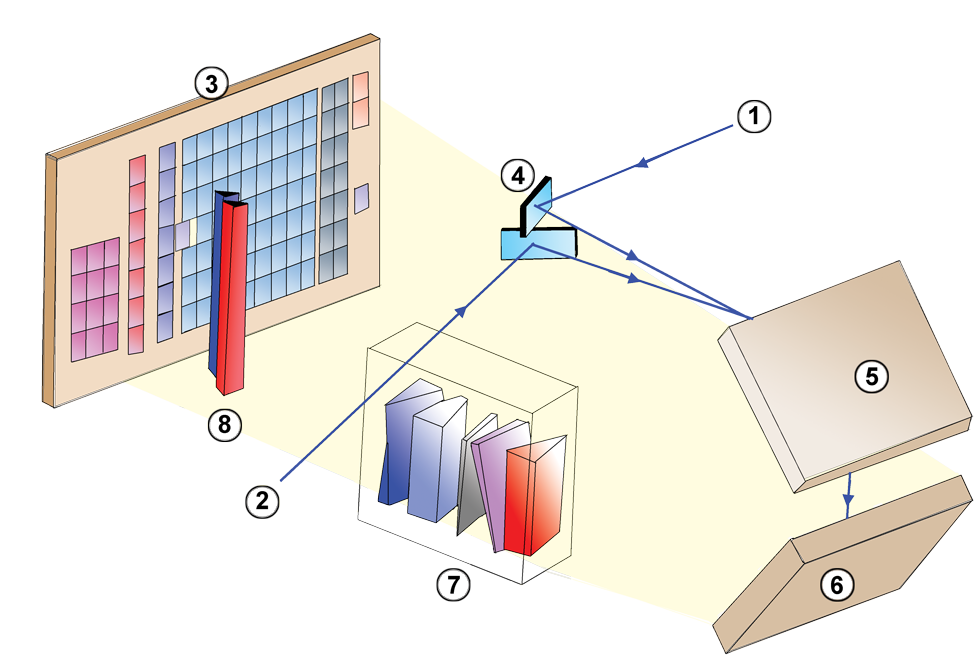
Image courtesy of
Wikipedia
The telescope slowly precesses, so that its spin sweeps out new areas in the sky over time. A typical star will be measured about 70 times over the course of the primary mission (2014 - 2019); that's about 14 measurements per year, though not all equally spaced.
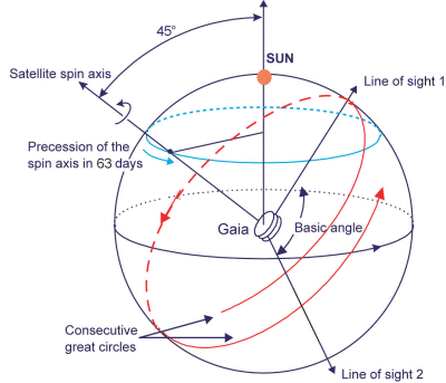
Image courtesy of
Space Flight 101
As the spacecraft precesses, the "partners" of each star will gradually change. Eventually, the spacecraft will have many millions (billions?) of measurements of the relative positions of millions of stars. Scientists can then use a honking-big linear algebra procedure to solve simultaneously for the positions and motions of each star.
How precise are the measurements made by Gaia? A recent paper by de Bruijne, Rygl and Antoja provides some predictions based on the earliest in-flight tests.
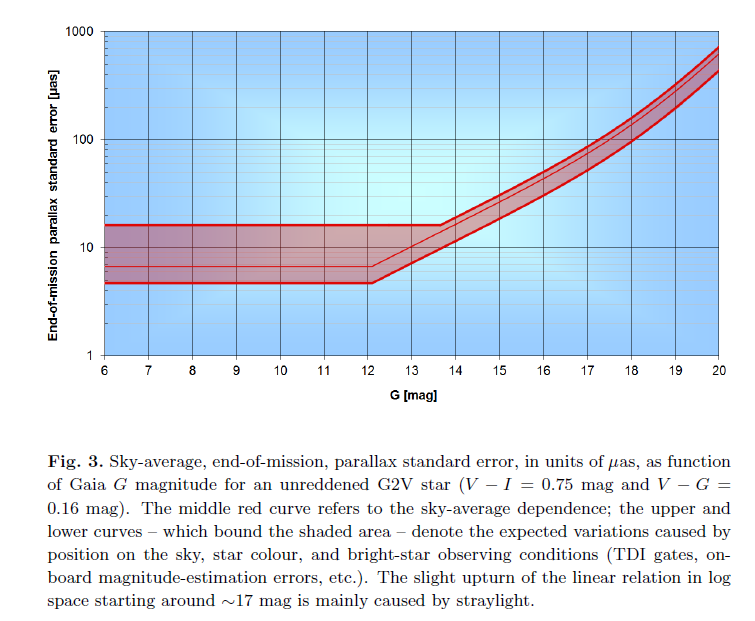
Fig 3 taken from
de Bruijne, Rygl and Antoja (2015)
Of course, Gaia will do much, much more than discover exoplanets. Its main goal is to measure stellar distances and motions, and so improve our knowledge of galactic structure and populations. Any exoplanet discoveries will be icing on the cake.
Q: Suppose that Gaia can measure the parallax of stars with
an uncertainty of 24 micro-arcseconds.
How far out into space can we trust the measurements
of stellar distances?
You might think that the answer is simply "maximum good distance is the reciprocal of uncertainty in parallax", which would yield a range of about 42,000 pc; but that ignores an important bias in parallax measurements.
In any case, Gaia will greatly increase our knowledge of the stellar neighborhood. It will produce a catalog of roughly 100 million stars with distances good to about 10 percent. The Hipparcos catalog contains only 0.12 million entries, of which only about 0.04 million satisfy the Lutz-Kelker criterion.
Another recent paper provides some numbers on Gaia's photometric precision:
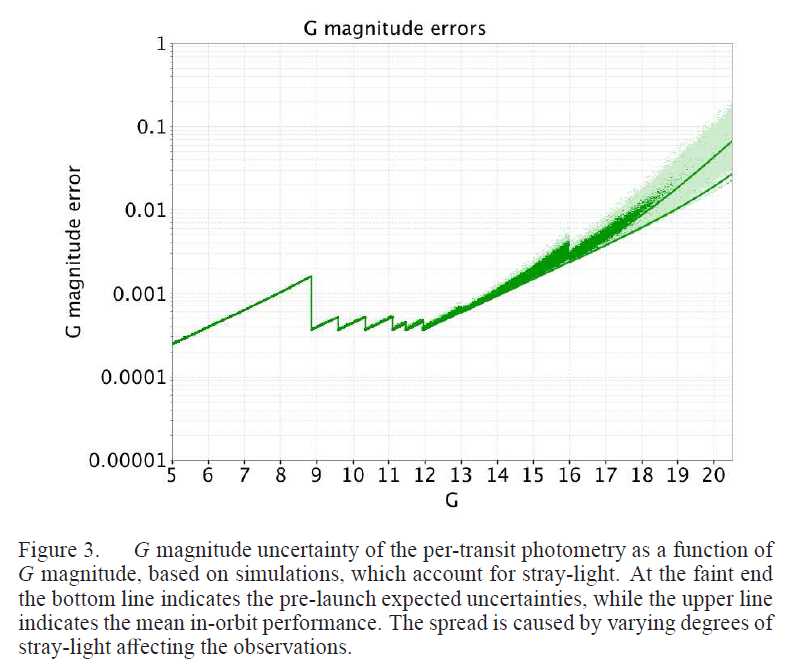
Figure 3 taken from
Eyer et al., 2015
Let's look at the timeline for Gaia operations and data releases.
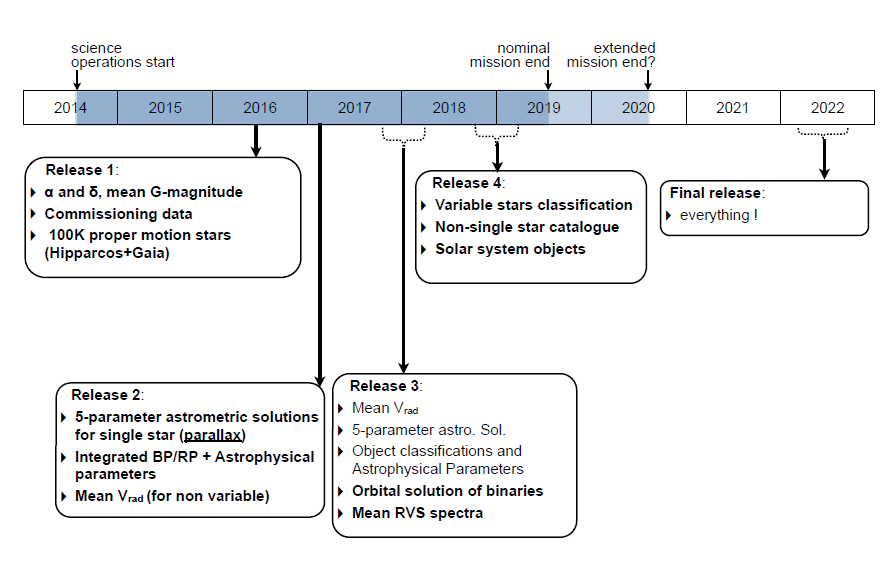
Figure 8 taken from
Eyer et al., 2015
Q: When will Gaia release a catalog which includes exoplanets? Q: What sort of planets will Gaia be most likely to detect?
What sort of properties are the planets detected by Gaia likely to have? I've added shaded regions to these diagrams to indicate very roughly the objects to which Gaia should be most sensitive.
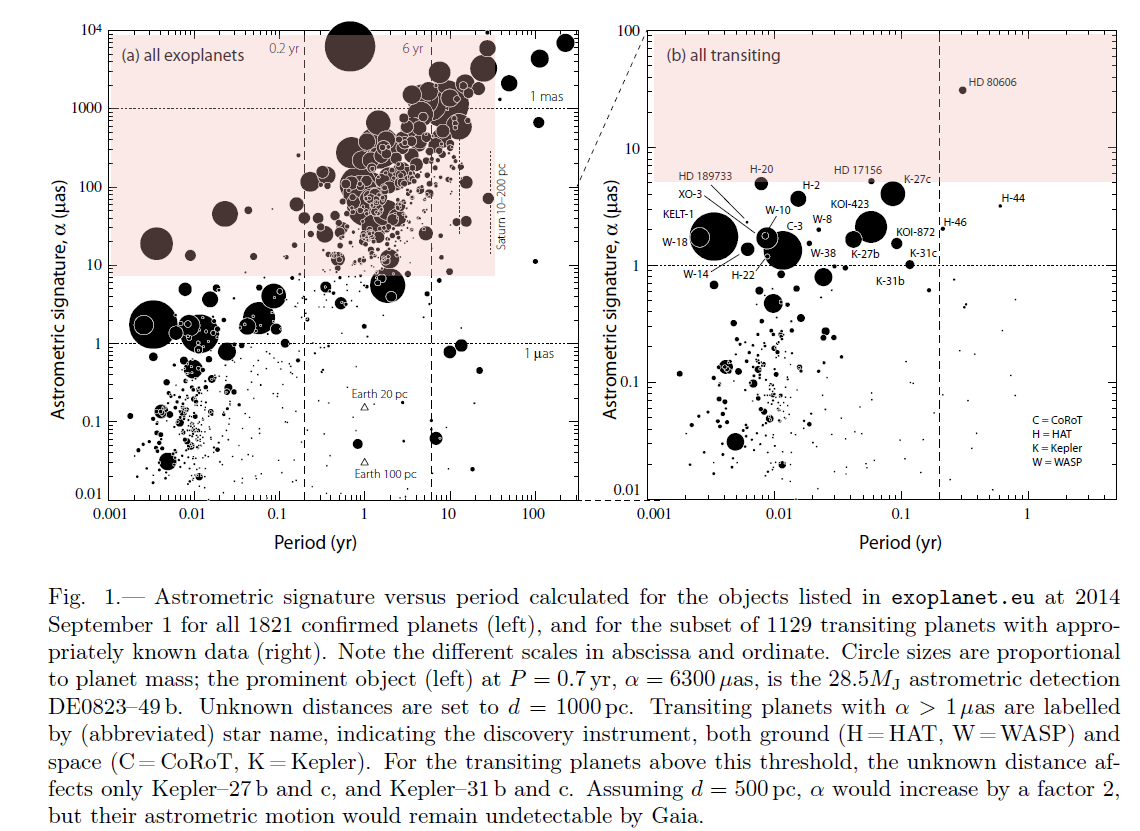
Image modified from Fig 1 of
Perryman et al., 2015
There's other science in Gaia, too. Asteroids, for example. Below is a figure showing the statistics of asteroids detected by Gaia during Jan - Mar, 2015.
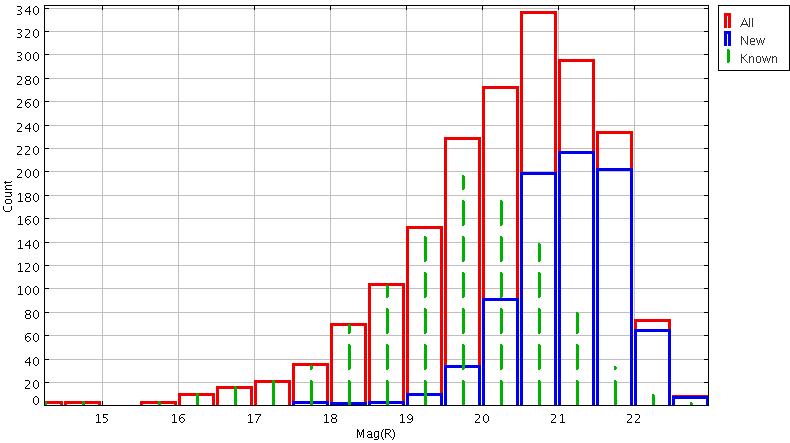
Fig 4 taken from
The GBOT asteroid finding programme
I haven't even mentioned Gaia's spectroscopic measurements, have I? Too little time!
 Copyright © Michael Richmond.
This work is licensed under a Creative Commons License.
Copyright © Michael Richmond.
This work is licensed under a Creative Commons License.